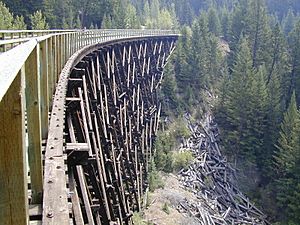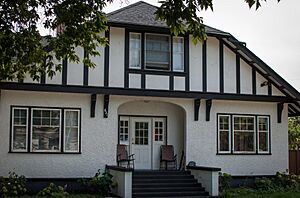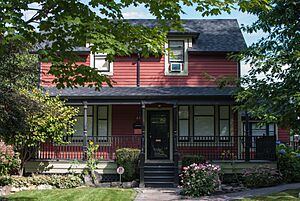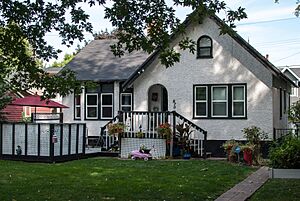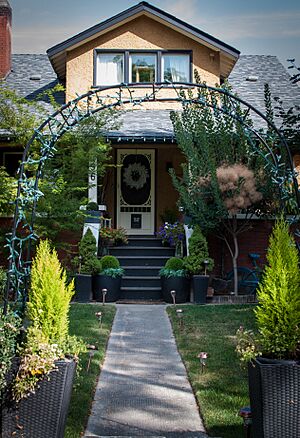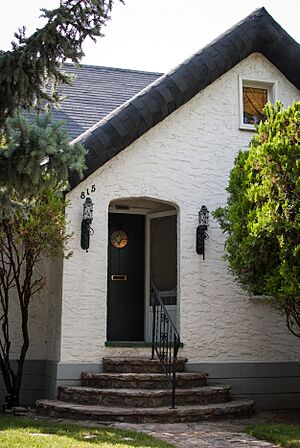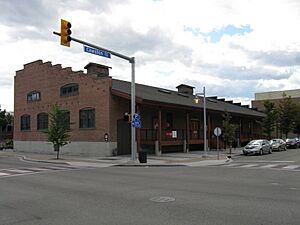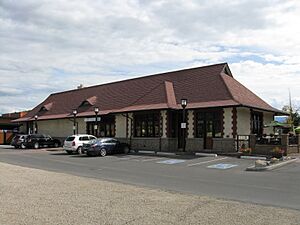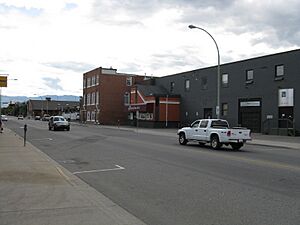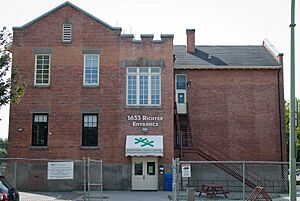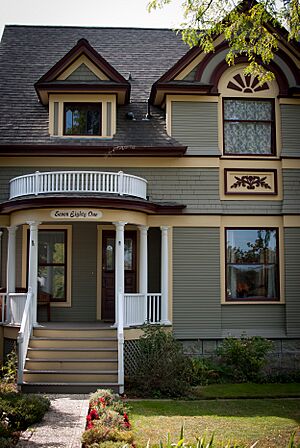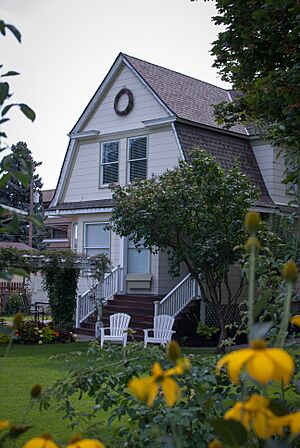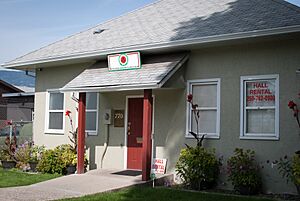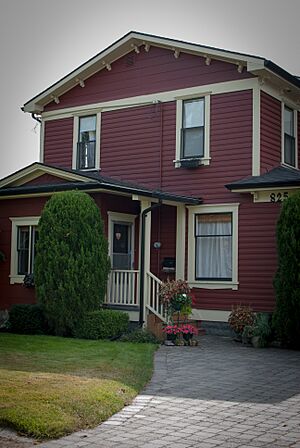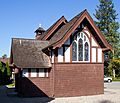List of historic places in the Central Okanagan Regional District facts for kids
The Central Okanagan Regional District in British Columbia is home to many special places that tell stories about the past. These places are listed on the Canadian Register of Historic Places. This register helps protect buildings, sites, and areas that are important to Canada's history.
Contents
What is a Historic Place?
A historic place is a building, area, or site that has special meaning because of its history. It could be important for its architecture, its connection to a famous person, or because a big event happened there. When a place is on the Canadian Register, it means it's recognized nationally for its value. This helps make sure these places are kept safe for future generations to learn from and enjoy.
Exploring Historic Sites in Central Okanagan
The Central Okanagan area has many historic places, from old railway lines to early homes and community buildings. Let's explore some of them.
Myra Canyon Railway Section
One of the most famous historic sites is the Myra Canyon Section of the Kettle Valley Railway National Historic Site of Canada. This part of the railway is in Myra Canyon. It's known for its amazing bridges and tunnels. The railway was a huge project that helped connect communities in British Columbia a long time ago. Today, it's a popular spot for hiking and biking, offering incredible views.
Important Buildings in Kelowna
Many historic places are found right in the city of Kelowna. These include old homes, schools, and even a fire hall.
Early Homes and Houses
- McGregor House at 1788 Ethel Street is an example of an early home. Many houses like the G. Davis House (1927 Ethel Street) and Adams House (1998 Abbott Street) show how people lived in the past.
- The Annie Stirling House (2178 Pandosy Street) and Atchison House (831 Lawrence Avenue) are also recognized. These homes often have unique architectural styles from their time.
- The H.C. Cooper House (862 Bernard Avenue) and Hughes-Games House (870 Bernard Avenue) are other examples of historic residences. They help us understand the growth of Kelowna.
- The William Harvey House (796 Bernard Avenue) and Winter House (815 Bernard Avenue) add to the collection of important historic homes in the city.
Community and Commercial Buildings
- The BC Growers Packing House (1304 Ellis Street) was a key part of the fruit industry in Kelowna. It shows the importance of agriculture to the region's history.
- The CN Station (520 Clement Avenue) is an old train station. Train stations were vital for travel and trade in the past.
- The Old Cannery (1250-1298 Ellis Street) is another industrial building. Canneries processed local produce, which was a big part of the economy.
- The Old Glenn Avenue School (1633 Richter Street) reminds us of early education in Kelowna. Schools are important community landmarks.
- The Leckie House (781 Bernard Avenue) is a notable building on a main street. Many buildings on Bernard Avenue, like the Casorso Block and Foster Block, were important for businesses and community life.
- The Meikle House (757 Lawrence Avenue) and Women's Institute Hall (770 Lawrence Avenue) are also significant. The Women's Institute Hall was a place for community gatherings and activities.
- The building at 825 Lawrence Avenue and the Atchison House at 831 Lawrence Avenue are also on the register, showing the historic character of the street.
Churches and Missions
- The Benvoulin Church (2279 Benvoulin Road) is a historic church. Churches often served as central points for early communities.
- The Pandosy Mission (3685 Benvoulin Road) is a very important historical site. It was the first permanent non-Indigenous settlement in the Okanagan Valley. It includes several original buildings.
- St. Andrew's Church (4619 Lakeshore Road) and St. Mary's Anglican Church (2710 East Kelowna Road) are also historic places of worship.
Fintry Estate Buildings
Near Kelowna, the Fintry estate has several historic farm buildings. These include the Fintry Haybarn-Granary, the Fintry Manor House, the Fintry Octagonal Dairy Barn, and the Fintry Packinghouse. These buildings show what large farms and estates were like in the early days of the region.
Images for kids


